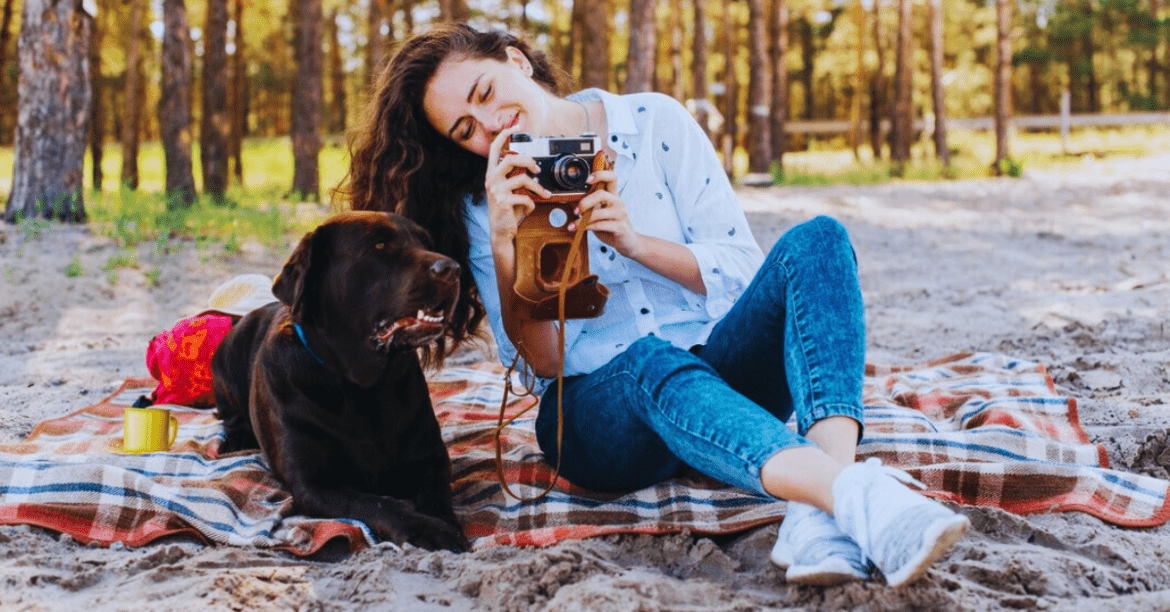Before you head out into the wild, it’s crucial to assess whether your dog is ready for the camping experience. Not all dogs are suited for the outdoors, especially in unfamiliar environments. Consider your dog’s temperament, health, and obedience training.
Dogs that are prone to anxiety, are very young, very old, or have chronic health issues might struggle with the challenges of camping.
Choosing the Right Campsite
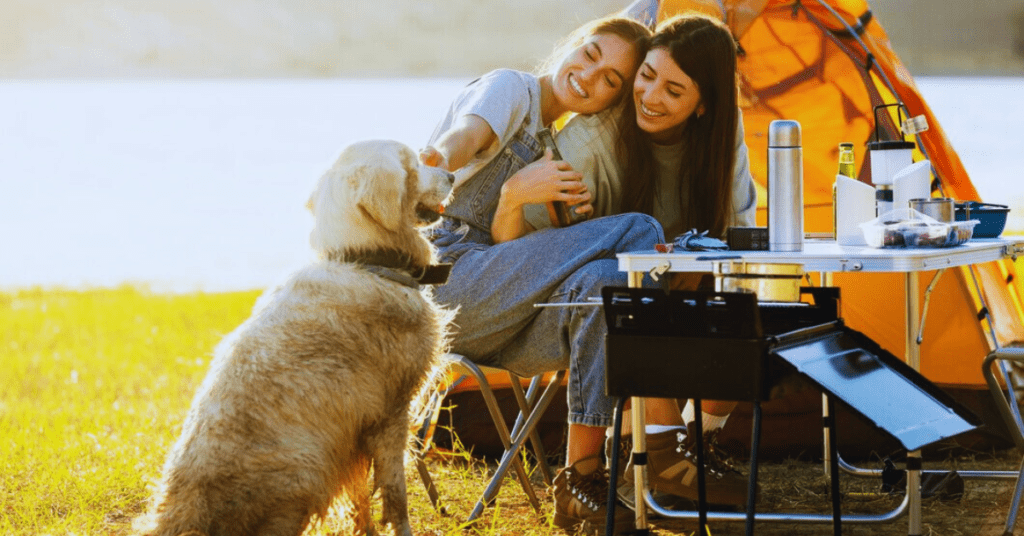
When camping with your dog, selecting the appropriate campsite is vital. Not all campsites are dog-friendly, so check the site’s pet policy beforehand. Look for campsites that offer plenty of space, have dog-friendly trails, and provide shaded areas to keep your dog comfortable.
Avoid crowded campsites where noise and other dogs might overstimulate your pet. If you’re venturing into more remote areas, ensure the environment is safe for your dog, free from hazards like sharp rocks, poisonous plants, and dangerous wildlife.
Packing the Essentials for Your Dog
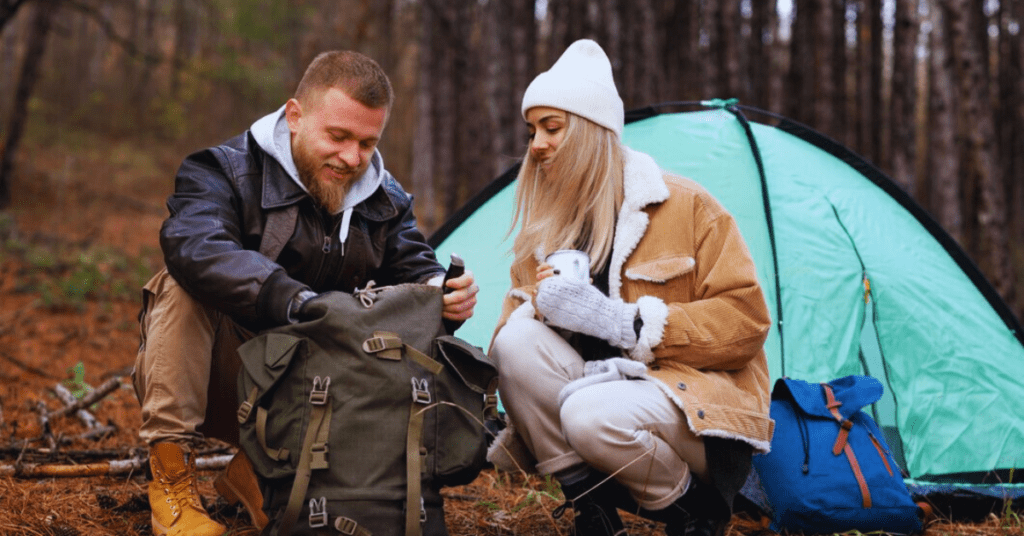
Packing for your dog is as important as packing for yourself. Start with the basics: a collar with an ID tag, a sturdy leash, and a harness. These items are non-negotiable as they help keep your dog secure and identifiable. Additionally, bring a portable water bowl and enough fresh water to keep your dog hydrated.
especially during warm weather. Food is another essential—pack enough of your dog’s regular food to last the entire trip, plus some extra in case of emergencies.

Consider packing a first-aid kit tailored for dogs, including items like antiseptic wipes, bandages, tweezers (for ticks), and any medications your dog might need. Dog booties can also be beneficial, protecting your dog’s paws from rough terrain, hot surfaces, and cold temperatures.
If your dog is prone to anxiety, especially in new environments, consider bringing a comfort item such as a favorite toy or blanket.
Managing Your Dog at the Campsite
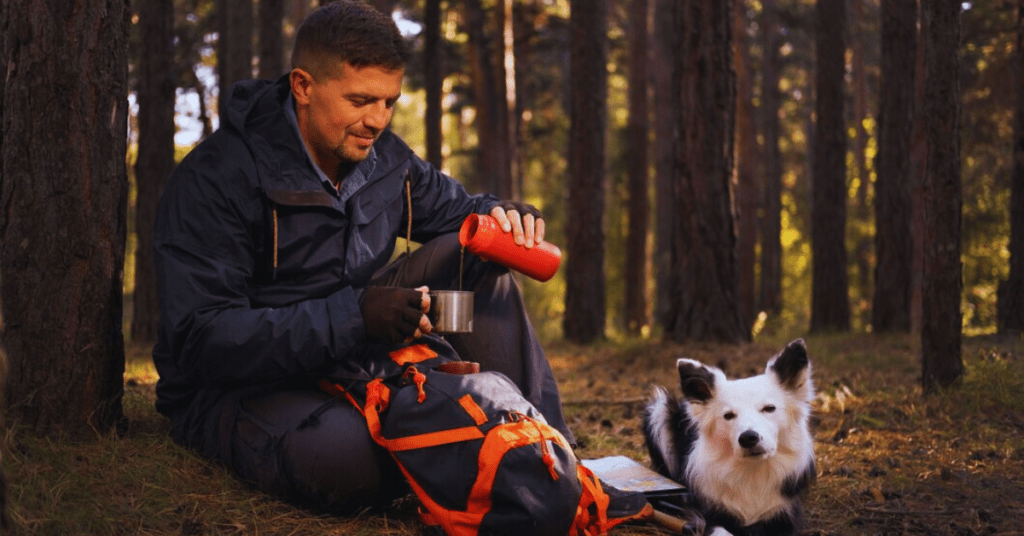
Once at the campsite, setting up a safe and comfortable space for your dog is crucial. Choose a spot that’s shaded and close to your tent. If your dog is prone to wandering, consider using a stake and cable system to keep them within a secure area.
Make sure your dog has a comfortable place to rest—a dog bed or mat is ideal for giving your pet a designated sleeping area that’s off the ground.
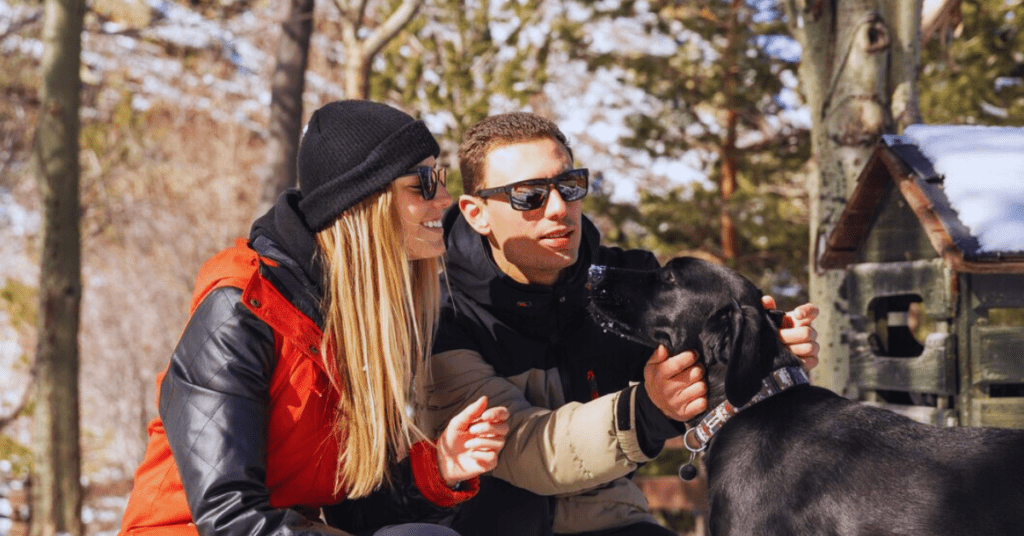
It’s important to maintain your dog’s routine as much as possible. Stick to their regular feeding schedule, and provide plenty of opportunities for exercise and bathroom breaks. Always keep your dog leashed when outside of your designated area, as this prevents them from chasing after wildlife or getting lost.
Campfire Safety and Nighttime Precautions
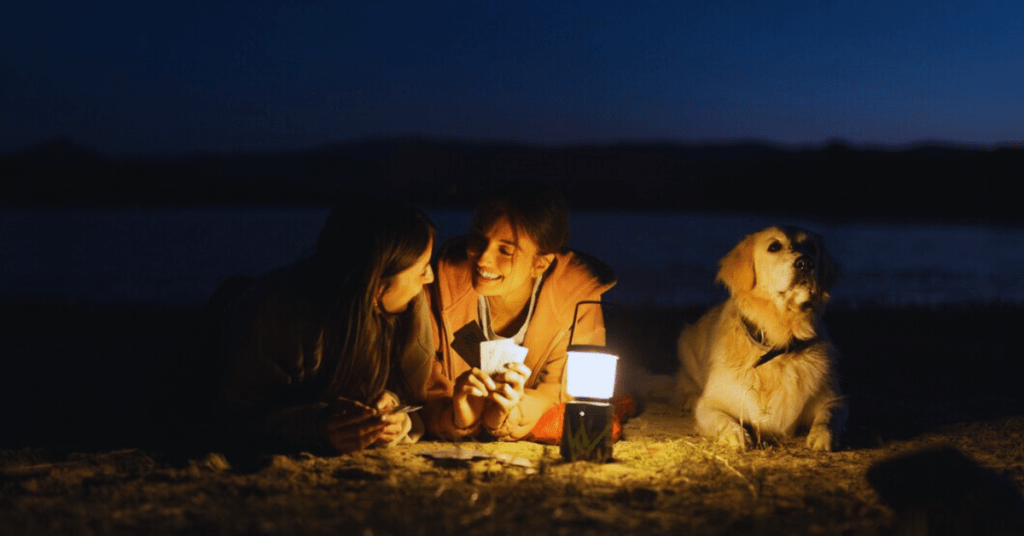
Campfires are a beloved part of the camping experience, but they pose risks to dogs. Ensure your dog is kept at a safe distance from the fire to prevent burns or accidents. Never leave your dog unattended near a campfire, as their curiosity might lead them too close to the flames.
Consider using a reflective collar or vest on your dog at night to make them easily visible in low-light conditions. Keeping a flashlight or headlamp handy for nighttime walks is also advisable.

At night, secure your dog in the tent with you. This not only keeps them safe but also provides them with a sense of security. Avoid leaving food or treats inside your tent, as the scent can attract unwanted wildlife, putting both you and your dog at risk.
Conclusion
Camping with your dog can be a rewarding experience that strengthens your bond and allows you to create lasting memories together. By following these tips and packing the essentials, you can ensure that both you and your dog have a fantastic and safe outdoor adventure.
Frequently Asked Questions
How can I keep my dog cool during warm-weather camping?
To keep your dog cool during warm-weather camping, provide plenty of fresh water and ensure they have access to shaded areas throughout the day. Avoid strenuous activities during the hottest parts of the day and take breaks to let your dog rest and cool down. Consider bringing a cooling mat or vest for your dog, and be aware of signs of heatstroke, such as excessive panting, drooling, and lethargy.
What should I do if my dog encounters wildlife while camping?
If your dog encounters wildlife, it’s important to stay calm and ensure your dog is under control. Keep your dog leashed to prevent them from chasing or disturbing animals. Train your dog to respond to basic commands like “leave it” and “come” to help manage their behavior in such situations. Always be vigilant and aware of your surroundings to avoid encounters with potentially dangerous wildlife.
How do I manage my dog’s behavior at the campsite?
o manage your dog’s behavior at the campsite, maintain their routine as much as possible, including regular feeding and exercise schedules. Keep your dog leashed or within a secure area to prevent wandering. Set up a comfortable space for them near your tent, and ensure they are not disturbing wildlife or other campers. Positive reinforcement and bringing along familiar items like a favorite toy or blanket can help keep your dog calm and well-behaved.
What should I consider when choosing a campsite for camping with my dog?
When selecting a campsite, ensure it is dog-friendly by checking the site’s pet policy in advance. Look for campsites with ample space, shaded areas, and dog-friendly trails. Avoid overcrowded areas to reduce stress for your dog, and make sure the environment is free from hazards such as sharp rocks, poisonous plants, and dangerous wildlife.
How can I ensure my dog stays safe around the campfire?
To keep your dog safe around the campfire, always supervise them closely. Keep your dog at a safe distance from the flames using a leash or a designated area. Never leave your dog unattended near a campfire, as their curiosity might lead them too close to the heat. Additionally, make sure they have a designated sleeping area away from the fire to prevent any accidents during the night.

